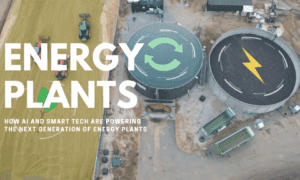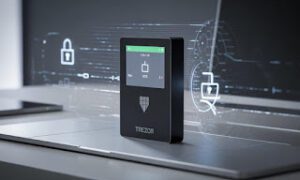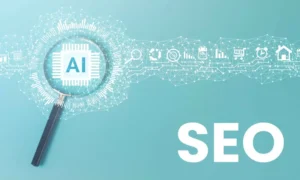Welcome to the era of clean and sustainable energy! The world is experiencing a paradigm shift in how we consume power, with technology at the forefront of this revolution. Gone are the days when fossil fuels ruled supreme – today, renewable sources such as solar and wind are taking center stage. In this blog post, we dive deep into the dynamic ways in which technology is leading the charge for renewable energy consumption. Buckle up as we explore innovative advancements, game-changing solutions, and electrifying possibilities that are propelling us towards a greener future like never before!
Introduction: Setting the Scene of Energy Consumption in Today’s World
As the world population continues to grow, so does our reliance on energy. With modern advancements in technology, our energy consumption has skyrocketed and is projected to continue increasing in the coming years. This has led to a significant strain on traditional sources of energy such as fossil fuels, resulting in environmental degradation and concerns for sustainability.
Setting the Scene of Energy Consumption:
The demand for energy has been steadily rising due to various factors including urbanization, industrialization, and technological advancements. Today’s world heavily relies on non-renewable sources of energy like coal, oil, and natural gas which are being depleted at an alarming rate. These fossil fuels not only emit harmful greenhouse gases but also contribute to air and water pollution, leading to health hazards.
Moreover, the growing population requires more resources for basic needs such as transportation, electricity, heating/cooling systems which all consume substantial amounts of energy. As a result, we are facing unprecedented levels of carbon emissions that are contributing to climate change and its adverse effects on our planet.
The Impact of Non-Renewable Energy Sources on the Environment
Non-renewable energy sources, such as fossil fuels and nuclear power, have been the primary source of energy for centuries. These types of energy sources have fueled economic growth, industrialization, and development around the world. However, their impacts on the environment cannot be ignored. The use of non-renewable energy sources has led to serious consequences for our planet’s health and well-being.
The most significant impact of non-renewable energy sources on the environment is climate change. Burning fossil fuels releases large amounts of greenhouse gases into the atmosphere, trapping heat and causing global temperatures to rise. This contributes to extreme weather events like hurricanes, droughts, and heatwaves that can cause devastating damage to ecosystems and human communities.
In addition to climate change, another environmental concern associated with non-renewable energy is air pollution. The combustion of coal, oil, and natural gas releases pollutants like sulfur dioxide, nitrogen oxides, and particulate matter into the air. These pollutants can cause respiratory illnesses in humans and harm plants’ growth by damaging their leaves.
The extraction process for non-renewable resources also has a detrimental effect on land and water quality. For instance, mining for coal or oil involves clearing forests or digging up land which destroys habitats for wildlife. This destruction also disrupts delicate ecosystems that provide important services such as water purification or carbon sequestration.
Technological Advancements in Renewable Energy: Solar, Wind, and Hydro Power
Renewable energy sources, such as solar, wind, and hydro power, have been gaining popularity in recent years due to their numerous environmental and economic benefits. These sources of energy are constantly evolving and improving with the help of technology. In this section, we will explore the latest technological advancements in renewable energy and how they are revolutionizing the way we consume energy.
Solar Power:
Solar power is one of the fastest-growing renewable energy sources, thanks to its widespread availability and decreasing costs. Technological advancements have played a crucial role in increasing the efficiency and reliability of solar panels. One major breakthrough is the development of thin-film solar cells, which use only a fraction of silicon compared to traditional panels while still producing similar levels of electricity. This has significantly reduced the cost of solar panels, making them more affordable for both residential and commercial use.
Another important advancement is in solar tracking systems that allow panels to follow the movement of the sun throughout the day, increasing their efficiency by up to 25%. Moreover, there have been significant improvements in battery storage technology for storing excess solar energy for later use. With these advancements, solar power has become more reliable than ever before.
Wind Power:
Another rapidly growing renewable energy source is wind power. Technological developments such as taller turbines with longer blades and advanced control systems have significantly improved wind turbines’ efficiency over time. The size and capacity of wind turbines have increased dramatically in recent years, enabling them to generate more electricity at lower costs.
One notable innovation is floating offshore wind turbines, which are placed on floating platforms in deep water. This technology allows for the installation of wind farms in areas with more consistent winds, increasing their efficiency and output. Additionally, advancements in energy storage have also made wind power more reliable, as excess energy can now be stored for later use.
Hydro Power:
Hydro power has been used for centuries to generate electricity, but recent technological advancements have made it even more efficient. One notable innovation is the development of turbines that can generate electricity from low head or low flow water sources. These turbines are smaller and easier to install, making hydro power accessible in remote areas.
Another significant advancement is the use of smart control systems that optimize the generation of electricity based on weather conditions and demand. This technology has greatly improved the reliability and stability of hydro power plants.
Smart Grid Technology:
One common challenge with renewable energy sources is their intermittent nature, i.e., they cannot produce electricity consistently throughout the day. However, advancements in smart grid technology have helped overcome this issue by enabling better management and distribution of renewable energy.
Breakthrough Innovations: Tapping into Unconventional Sources for Clean Energy
In recent years, there has been a growing global push towards finding alternative sources of energy to reduce our dependency on fossil fuels and combat the effects of climate change. While renewable energy sources such as wind and solar power have gained significant traction, there are still many unconventional sources that hold promise for clean energy production.
One major breakthrough in this area is harnessing the power of ocean waves for electricity generation. Ocean waves are a form of kinetic energy caused by wind blowing over water surfaces, which can be converted into electrical energy using specialized equipment called wave energy converters (WECs). These WECs are designed to capture the up and down motion of waves and convert it into usable electricity through hydraulic or mechanical systems.
The benefits of wave energy technology are numerous. Unlike other renewable sources like solar or wind power that rely on weather patterns, ocean waves occur consistently making them a reliable source of clean energy. They also have a relatively low carbon footprint compared to traditional methods of electricity generation.
Another unconventional source being tapped into for clean energy is geothermal heat, which involves extracting thermal energy from hot spots deep within the Earth’s surface. This can be done through drilling wells to access steam or hot water reservoirs, which can then drive turbines to generate electricity.
Geothermal power plants can provide a constant supply of baseload electricity without depending on external factors such as weather conditions. They also have very low emissions and are not affected by changes in fuel costs, making them an attractive option for sustainable power generation.
Pros and Cons of Utilizing Technology for Renewable Energy Production
As the world becomes increasingly focused on finding sustainable and eco-friendly sources of energy, technology has played a major role in revolutionizing energy consumption. One of the most notable impacts that technology has had in this area is its role in promoting the use of renewable sources of energy. Renewable energy sources, such as solar, wind, hydro, and geothermal power, have gained immense popularity in recent years thanks to advancements in technology.
While there are numerous benefits to utilizing technology for renewable energy production, there are also some drawbacks that must be considered. In this section, we will take an in-depth look at the pros and cons of using technology for renewable energy production.
Pros:
1. Cost-effective: Technology has made it more affordable to harness renewable sources of energy. Traditional methods of producing renewable energy were often expensive and could only be implemented on a large-scale basis. However, with technological advancements such as improved solar panel efficiency and cheaper wind turbines, these alternative forms of energy have become more accessible to individuals and smaller businesses.
2. Reliable and consistent: Unlike traditional fossil fuels which can run out or fluctuate in price due to market conditions, renewable sources of energy are consistently available once installed properly. With the help of advanced technology such as battery storage systems, excess power generated from renewables can be stored for future use ensuring a constant supply for consumers.
3. Reduced carbon footprint: One of the biggest advantages of utilizing technology for renewable energy production is its positive impact on the environment. By relying less on non-re newable sources of energy, we can significantly reduce our carbon footprint and mitigate the effects of climate change.
4. Job creation: The development and use of technology for renewable energy production has created job opportunities in various fields such as engineering, construction, maintenance, and research. This not only benefits the economy but also helps transition workers from traditional energy industries to the growing renewable energy sector.
5. Diverse applications: Advanced technology has made it possible to harness renewable energy in diverse ways – from large-scale power generation to small-scale electricity production for individual households. This allows for a more decentralized and distributed system of energy production, reducing dependence on a few large power plants and increasing energy security.
Cons:
1. High initial costs: While the long-term benefits of renewable energy are clear, the initial costs can be steep. The installation and implementation of technology such as solar panels or wind turbines require significant investments which may deter some individuals or businesses from transitioning to renewables.
2. Intermittent supply: Renewable sources of energy can be affected by external factors such as weather conditions, making their supply intermittent. This means that alternative backup sources must be in place to ensure a constant supply of electricity.
3. Location-specific: Some forms of renewable energy like hydro and ge othermal power are location-specific and may not be feasible for use in all regions. This limitation can make it difficult to fully rely on renewable energy in certain areas.
4. Advancements in technology: As with any technology, advancements and upgrades are constantly being made. This means that newer, more efficient technologies for harnessing renewable energy will continue to emerge, making it challenging for businesses and individuals to determine when is the best time to invest in a specific technology.
5. Environmental impact: While renewable sources of energy are generally considered more environmentally friendly than fossil fuels, they can still have some negative environmental impacts. For example, the production of solar panels requires rare earth minerals that can be harmful to the environment if not recycled properly.
Case Studies: Real-Life Examples of How Technology is Making a Difference
In recent years, the issue of climate change and its impact on our environment has become a major concern for people all around the world. As traditional sources of energy like fossil fuels continue to harm our planet, it has become more important than ever to find alternative and renewable sources of energy. Fortunately, advancements in technology have made this possible and are revolutionizing the way we consume energy.
To paint a clearer picture of how technology is leading the charge towards renewable sources, let’s take a look at some real-life case studies that highlight its effectiveness and impact.
1. Solar Power in India
One country that has been at the forefront of utilizing technology for renewable energy is India. In 2015, they set an ambitious goal to generate 100 GW of solar power by 2022. This was made possible through innovative technologies such as floating solar farms, which can be installed on water bodies to save space and maximize efficiency.
India also implemented smart grid systems that use advanced sensors and software to efficiently manage the distribution of electricity from renewable sources like solar panels. These developments have significantly increased India’s renewable energy capacity, providing cleaner and more sustainable options for their growing population.
2. Offshore Wind Farms in Denmark
Denmark has long been known for its commitment to renewable energy, with nearly half of its electricity being generated from wind power alone. Recently, they took things a step further by implementing offshore wind farms that utilize cutting-edge technology.
These offshore wind farms are much larger than traditional land-based ones and are equipped with advanced turbines that can harness the strong winds at sea. This has increased the efficiency of wind power production and reduced its impact on citizens who live near traditional land-based wind farms.
3. Smart Home Energy Management in California
In California, a state known for its progressive environmental policies, technology has been used to create energy-efficient smart homes. These homes are equipped with sensors and automated systems that can monitor and adjust energy usage based on real-time data.
This has led to a significant reduction in energy consumption, saving homeowners money and reducing their carbon footprint. By 2020, it is estimated that nearly 1 million homes in California will have implemented these smart energy management systems.
4. Renewable Microgrids in Puerto Rico
After Hurricane Maria devastated Puerto Rico’s electricity grid in 2017, the island turned to advanced renewable microgrids as a solution. These small-scale grids use solar panels and batteries to generate and store electricity locally, providing a sustainable alternative to the unreliable centralized grid.
These microgrids have not only provided residents with reliable and clean energy but have also made Puerto Rico more resilient against future natural disasters.
5. Geothermal Energy in Iceland
Iceland is one of the leading countries in utilizing geothermal energy, which harnesses the Earth’s natural heat for electricity production. Its success can be attributed to the advancements in geothermal technology, such as binary power plants that can operate at lower temperatures and produce more energy.
Geothermal energy now accounts for nearly one-third of Iceland’s electricity production, making it one of the greenest countries in the world.
These case studies demonstrate the significant impact that technology is having on promoting renewable sources of energy. With continued advancements and investments in clean energy technologies, we can hope to see a greener and more sustainable future for our planet.
Government and Corporate Support for Innovative Solutions
The transition towards renewable energy sources has been a key focus for governments and corporations around the world. As the negative impacts of climate change become increasingly apparent, there is a growing urgency to shift away from fossil fuels and adopt cleaner, more sustainable alternatives. Governments and corporate entities have recognized this need for change and are actively supporting innovative solutions to revolutionize energy consumption.
One way in which governments are supporting renewable technologies is by implementing policies that incentivize their development and adoption. This can include tax breaks, subsidies, and other financial incentives designed to offset the higher costs associated with renewable energy sources. In recent years, we have seen a significant increase in these types of policies as governments prioritize the reduction of carbon emissions and invest in clean energy initiatives.
For example, countries like Germany and Denmark have implemented feed-in tariffs, which require utility companies to purchase electricity generated by small-scale renewable sources at a fixed rate. This provides an incentive for individuals and businesses to invest in their own renewable energy systems such as solar panels or wind turbines.
Governments are also promoting innovation through research grants and funding opportunities. By investing in research and development, they hope to discover new technologies that can further enhance the efficiency of renewable energies. This not only benefits the environment but also creates jobs within the clean energy sector.
Conclusion
As we have explored, technology is playing a crucial role in revolutionizing energy consumption and shifting towards renewable sources. From advancements in solar panels to the development of smart grid systems, it is evident that technology is leading the charge for a more sustainable future. By harnessing these innovations and continuously seeking out new solutions, we can create a cleaner and more efficient world for generations to come. Let us all embrace this technological revolution and work towards a greener tomorrow.



































